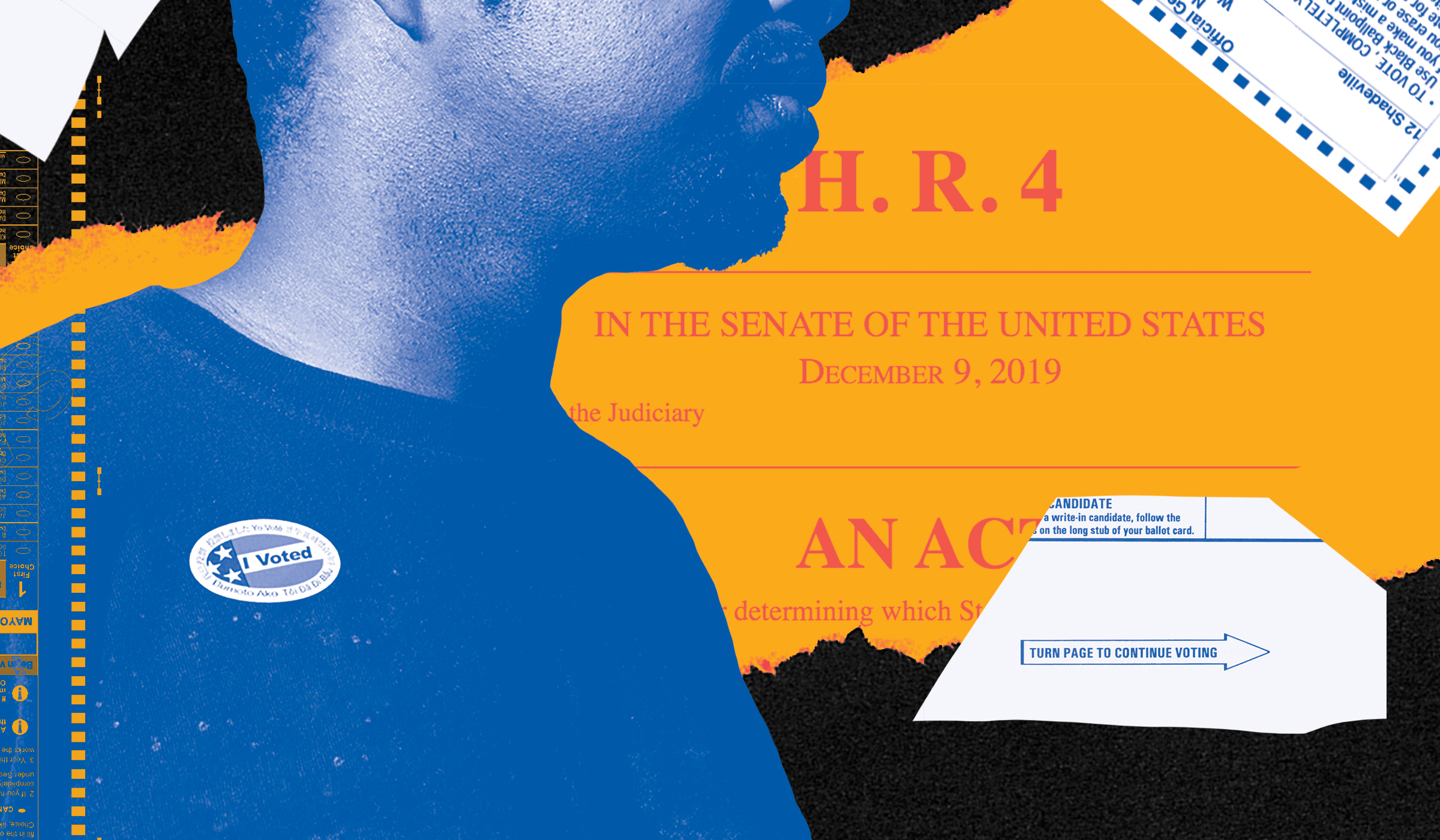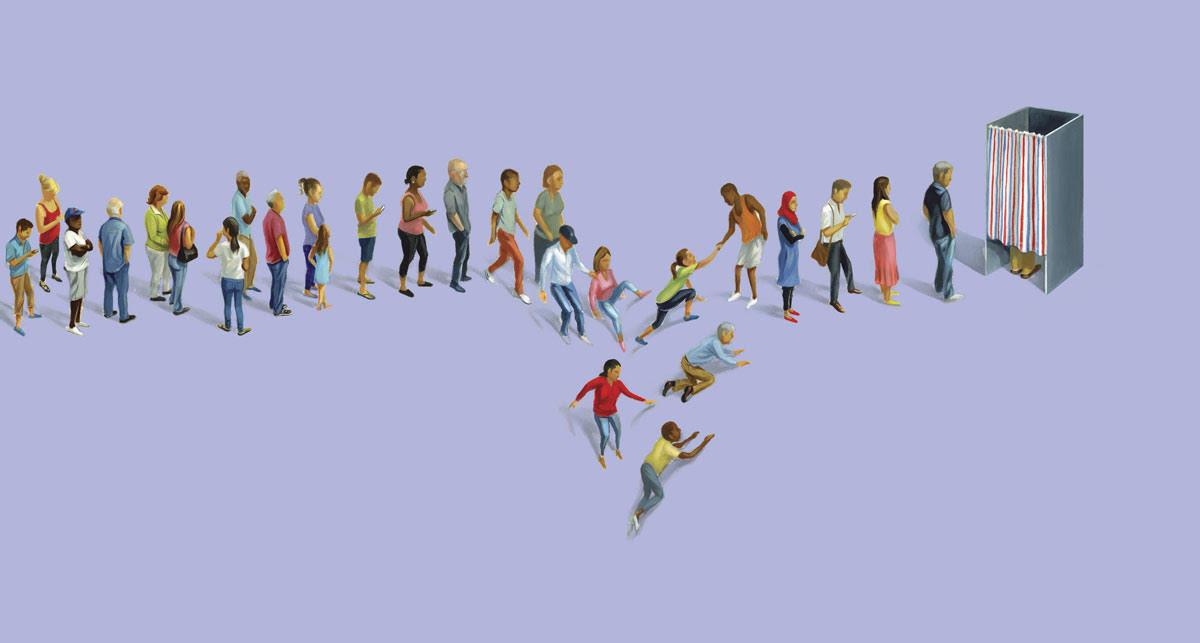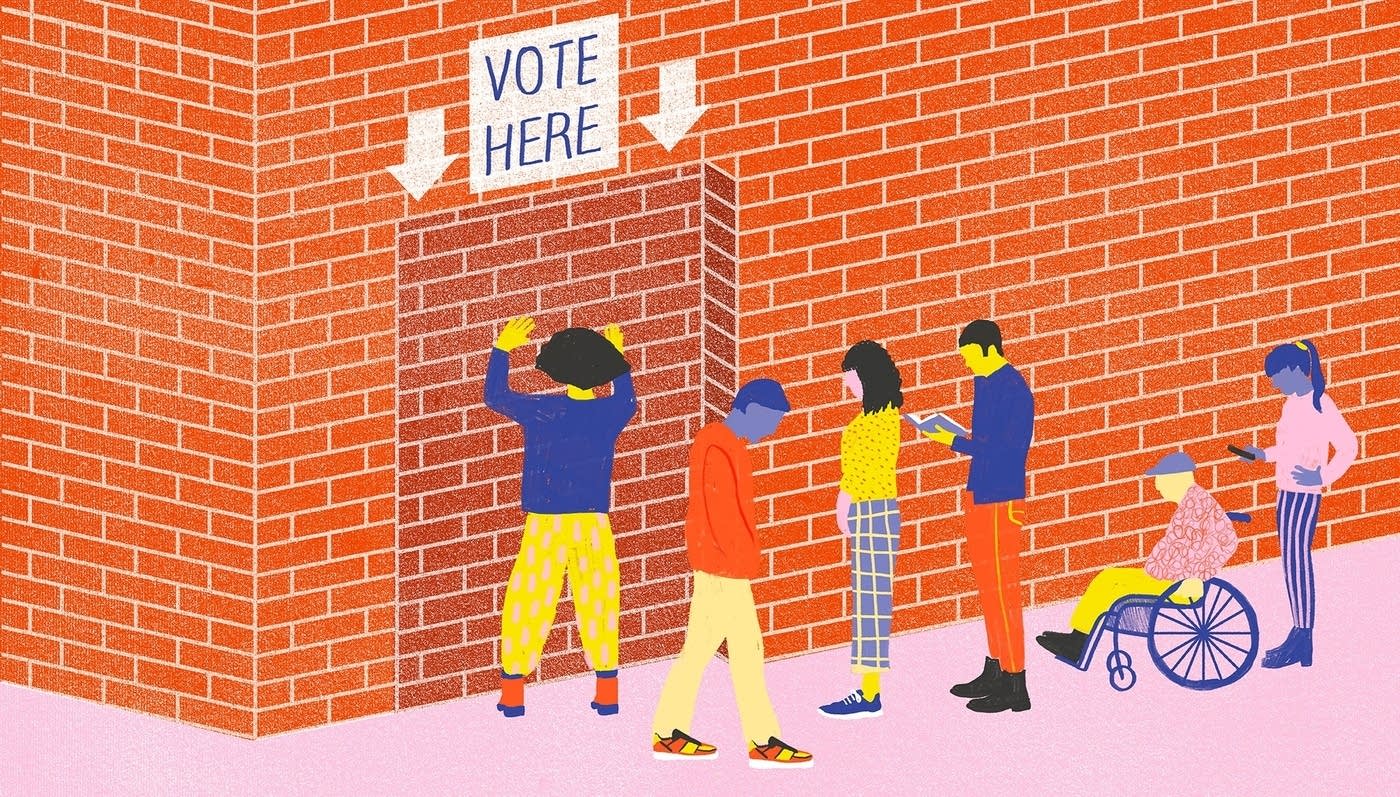Everything You Need to Know About Voter Suppression
And how to avoid being subject to it!

It’s no secret that this year’s election is one of the most critical elections we may ever face. This is a monumental occasion that could have some irreversible impacts on how we work to solve the climate crisis, champion progress for LGBTQ+ rights, and put an end to police brutality, to name a few issues threatening the lives of millions of Americans, as well as global communities. Needless to say, it’s imperative that we all vote if we have the opportunity to this November.
Before we hit the polls, or the post office with our mail-in ballots, it’s important to know exactly what to be mindful of and watch out for so communities around the nation have their votes counted and their voices heard.
A major issue that has impacted past voter turnout has been an overwhelming lack of education and information on the actual process, which is ultimately a form of voter suppression.
Voter suppression is a strategy, often used by those in positions of power, to discourage or make it harder for certain people and communities to vote in order to influence the election outcome. Voter suppression takes on many ugly forms, and we’re here to walk you through them so you can vote freely and fairly this Fall.
Mail-in Voting
To go over a recent example of voter suppression, Donald Trump has constantly pushed forward the false idea that mail-in ballots are a “scam” and “corrupt” because they allow for greater voter fraud. Officials, including the director of the FBI, have already debunked this idea intended to make people nervous about voting via mail. While voter fraud has been more common on mail-in ballots than in-person ballots, both of which are extremely rare.
Trump is calling to get rid of mail-in ballots and not have them count, a clear attempt at silencing the public and making it more difficult for us all to vote. In the middle of a global pandemic, voting via mail is one of the safer options. If we weren’t allowed to vote by mail, many people wouldn’t go out and vote because their safety comes first. Trump has also proposed pushing the election back so he can stay in his position longer, a clear abuse of power. Pushing the election would also undoubtedly cause nationwide confusion, and many people would decide to not vote altogether.
To learn more of the facts on mail-in voting and why you should absolutely do it, check this out.
All this being said, V wants to let you know It is perfectly safe to vote via mail this election, just be careful when voting because little mistakes could discount your ballot altogether, so look here to see what could accidentally disqualify your vote.

Ex-Felon Voting Rights
Certain voting laws barr people who have felony charges and convictions from voting in the election, a clear violation of basic rights. In some states it’s actually possible to restore your voting rights if you’ve had a felony charge, so look here to check if this applies to you or a loved one.
It is also common misinformation that all incarcerated people are not eligible to vote, when voter disenfranchisement laws vary by state. Maine, Vermont, and the District of Columbia are the only states and regions in which everyone can vote, including people in prison. However, limited access to this information still keeps many people in prison from voting, because they simply don’t know they can. Spread this information the best way that you possibly can.
If you or someone you know is incarcerated or has been incarcerated, check this map to see if you may be eligible to vote, and help spread this information to make it known.
Even so, in many states incarcerated people are not allowed to vote, suppressing the voices of millions of Americans. As the prison industrial complex also disproportionately targets people of color, this is a form of voter suppression based on race, an attempt to diminish the voices of predominantly Black and Latino citizens, often of a lower socio-economic status, who are incarcerated at higher rates than white citizens.
It is absolutely disheartening to know that the systems we live in are designed to suppress people of certain demographics, but groups like The Sentencing Project and The Florida Rights Restoration Coalition are working toward getting everyone the voting rights that they deserve, so please get involved.
Election Day
This may come as a surprise, but Voting Day itself is a form of voter suppression. I know you’re thinking, how can a day dedicated to voting be an act of voter suppression? But that’s the thing. Election Day isn’t truly a day dedicated to voting. Many people can’t afford to take the day off to vote, either because it could cost them their jobs or their ability to pay rent.
By making Election Day a national holiday, giving people school and work off, it would be much easier for voters to be able to make it to the polls and cast their vote ballots. Especially since Election Day is always on a Tuesday, in the middle of the week, not everyone can afford to take the day off. This is an act of voter suppression based on class, an attempt to make it even more difficult for people of a lower socio-economic status to not be able to vote. It’s not a truly fair election if not everyone is given the same opportunity and access to vote.
Though we most likely won’t be able to change that this election, getting involved with various organizations who are working to lower voter suppression would be especially helpful. Aside from that, if you or someone you know isn’t planning to vote because you won’t be able to physically go to the polls, look into voting by mail or voting early. Ask your bosses if you can take off that day if you can only vote in person because it is absolutely imperative for all of our futures.

Access to Polls
Going off the contradictory nature of Election Day itself, there are many other forms of voter suppression that involve limiting the public’s access to voting. This may involve a limited amount of polling stations in a broad area, an issue facing Texan voters right now, polling place relocations, and a shortage of poll workers, so be sure to keep updated on your local voting information and make sure nothing can stop you from casting your ballot.
Make sure you know exactly where and how you’re voting, and follow the necessary steps in order to cast your ballot. Try volunteering at the polls to do your part in limiting voter suppression.
Unnecessarily complicated instructions on voting are also a form of voter suppression, but there are plenty of helpful resources online to simplify it if you need a hand.
Lack of Accessibility
Not only is it difficult for people to access voting places based on class, but on physical and mental abilities as well.
Polling stations may lack the proper accommodations for those with physical disabilities, including ramps, wide doors, and proper disability accessible voting equipment. People with cognitive disabilities are often stripped of their voting rights altogether, depending on the state in which they reside.
While mail-in voting allows for greater accessibility this election, many people still rely on polling locations. If you or someone you know is planning to vote in person but may face the challenges of improper accommodations for a physical disability, the Help America Vote Act ensures that certain standards must be met to accommodate all voters on election day. While not every polling place may meet these requirements, contact your polling location ahead of time to see if they will provide the proper access for you or someone you know to successfully vote.
In terms of voting with a mental disability, look here to see if you or someone you know is impacted by disenfranchisement laws meant to suppress disabled voters.
Voter ID Laws
Voter ID laws are also designed to suppress voters, since not everyone has equal access to photo identification.
Voter ID rules and regulations also often negatively impact Transgender voters who may still have photo IDs from before their transition. It’s difficult enough for Transgender folk to go through the process of changing their ID if they choose to, but it places even more of a burden when Trans people attempt to vote and their photo ID may not be up to date.
Millions of Americans also don’t have government issued photo ID because it can be expensive and a long, undesirable process. Another target against lower-income communities, Voter ID laws vary by state and can be quite strict.
Check here to see your state’s Voter ID laws and make sure you fulfill those requirements before voting next month.

Voter Registration
If you haven’t already been shocked enough at these discriminatory forms of voter suppression, it’s important to know that voter registration in itself is a form of voter suppression. If you live in America and have the right to vote, you still need to register and it is crucial that we all vote this November, but just note that the system is inherently flawed. Due to a widespread lack of information, not everyone knows that they need to register beforehand, which means they won’t be allowed to cast a ballot come election day.
Other countries have universal voter registration, meaning they are automatically registered to vote. Registering to vote can be a complicated process, but we still need to do it. If you’re a bit frustrated with the registration process, just remember how important it really is for each and every one of us to make our voices heard this election.
Check here to make sure you’re registered.
Of course, voter suppression isn’t a pleasant topic, but it’s a conversation we all need to have. For this upcoming election and beyond, we all need to make sure our votes are counted, and also vote for those who can’t. We’re voting for everyone’s future, so please look out for one another this Election.
And look here for a more specific list of forms of Voter Suppression.
Discover More
